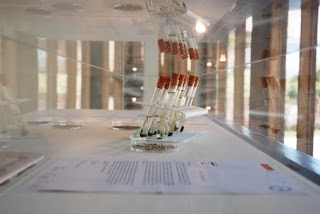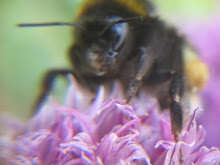


I got an email from Adrianne at Yorkshire Sculpture Park the other day to say that the blue test meadow plot behind the Garden Gallery had been cut, now that it's stopped flowering and the plants have shed their seeds.
The yellow plot will be cut later as it has still some plants flowering.
It doesn't seem that long since spring - and now summer is coming to a close.
Images by Adrianne Neil















































